In this fast-paced world, the evolution of technology has revolutionized the way we live, work, and interact with our surroundings. From the smallest gadgets to the largest industrial machines, innovation is the driving force behind progress. Today, we delve into the fascinating realm of automated systems, focusing on the impact they have on the assembly line of a modern air fryer—a kitchen appliance that’s not just convenient but also a testament to the seamless integration of technology and human ingenuity.
Introduction to the Automated Air Fryer Assembly Line
Ah, the world of kitchen appliances has certainly come a long way. Imagine a time when cooking was a labor-intensive task, with each dish requiring meticulous attention and manual effort. Fast forward to today, and we find ourselves in an era where technology has revolutionized the way we prepare our meals. Enter the automated air fryer assembly line, a marvel of modern engineering that’s changing the landscape of kitchen appliance manufacturing.
In this assembly line, the art of creating an air fryer has been transformed into a seamless, efficient process, where each step is meticulously choreographed by machines. Let’s take a closer look at what makes this automated assembly line not just a technological feat, but also a game-changer in the world of home cooking.
First, let’s talk about the heart of the assembly line: the components. These are the raw materials that will eventually become the sleek, efficient air fryer sitting on your countertop. They include the body, the heating element, the fan, the control panel, and a myriad of other parts that, when put together, will transform your kitchen into a healthier cooking haven.
The journey of these components begins with precision cutting and shaping. Robots equipped with laser-guided precision slice through metal and plastic with ease, ensuring that every piece is perfect. This level of accuracy is nearly impossible for human hands, but for a robot, it’s just another day at the office.
Once the pieces are cut to size, they move on to the welding stage. Here, robotic arms with the dexterity of a seasoned chef join the components together with precision. You might think that this process would be noisy and chaotic, but the opposite is true. The assembly line is almost silent, save for the occasional whir of a motor and the soft clink of metal parts being assembled.
Next comes the painting station. Here, the air fryer bodies are coated with a layer of paint that not only looks sleek and professional but also serves as a protective barrier against rust and corrosion. The paint is applied with such consistency that it’s hard to believe it’s not done by hand. Yet, it is, thanks to a high-tech spray system that ensures an even coat every time.
The electronic components are then carefully installed. This is where the air fryer’s brain comes to life. The control panel is mounted, and the circuit boards are soldered into place. Robots with precision tools handle this delicate work, ensuring that each wire is perfectly seated and each connection is secure.
After the electronics are in place, the air fryer moves through a series of quality control checks. Sensors and automated testing devices measure the performance of the fryer, checking for any anomalies in heating, fan operation, and control panel responsiveness. If everything checks out, the air fryer is deemed ready for the next phase.
The final touches involve packaging the air fryer for shipping. This is another task that’s been streamlined by automation. The assembled fryers are placed into their boxes, and the boxes are sealed and labeled with QR codes that can be scanned to track the product throughout its journey to the consumer.
Now, let’s talk about the benefits of this automated assembly line. For starters, it’s a marvel of efficiency. The line can produce air fryers at a rate that would be unimaginable for a human workforce. This not only means faster delivery to consumers but also lower production costs.
Quality control is another area where the automated assembly line shines. With robots handling the repetitive tasks, the consistency and precision are unparalleled. This leads to a product that is reliable and consistent, which is something every consumer appreciates.
But perhaps the most significant benefit is the reduction in labor costs. While the initial investment in the technology can be substantial, over time, the savings from reduced labor and increased productivity more than offset the costs. This allows manufacturers to be more competitive in the market and, in turn, pass those savings on to the consumer.
In conclusion, the automated air fryer assembly line is a testament to what modern technology can achieve. It’s a fusion of precision, efficiency, and innovation that has redefined the way we think about kitchen appliances. As we continue to push the boundaries of what’s possible, it’s exciting to think about the next wave of advancements that will continue to transform our homes and our lives.
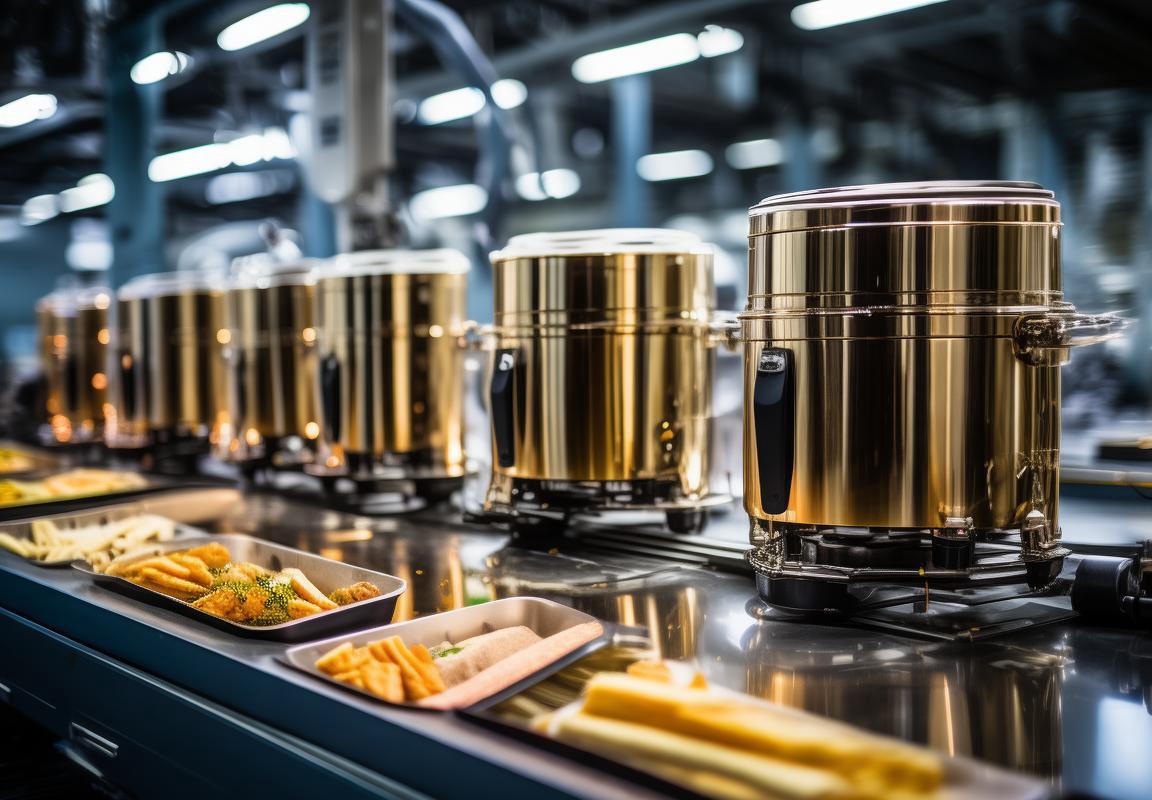
The Components of an Automated Assembly Line
In the heart of modern manufacturing, an automated assembly line for air fryers is a marvel of precision and efficiency. This line is a tapestry woven with various components, each playing a crucial role in the production process. Let’s take a closer look at these elements:
-
Feeding Systems: The assembly line begins with feeding systems that carefully place the individual components of the air fryer onto the conveyor belt. These systems use precision sensors to ensure that each part is aligned correctly and securely, setting the stage for a seamless assembly process.
-
Sensors and Vision Systems: Throughout the line, sensors and vision systems are employed to monitor and inspect the parts. They can detect any deviations from the required specifications, such as misaligned parts or incorrect dimensions, and automatically adjust the feeding process or stop the line to prevent defects.
-
Pick and Place Robots: These robots are the hands of the assembly line, delicately picking up components from bins and placing them into designated slots on the air fryer. They are programmed with complex algorithms that allow them to perform intricate tasks with pinpoint accuracy.
-
Welding and Soldering Machines: As the components are assembled, welding and soldering machines ensure that the parts are securely connected. These machines use robotic arms to apply the correct amount of heat, pressure, or solder, guaranteeing a strong and durable connection.
-
Drilling and Machining Centers: To create the necessary holes and contours for assembly, drilling and machining centers are used. These centers are capable of high-speed operations and can process multiple parts simultaneously, optimizing the assembly time.
-
Painting and Coating Systems: The aesthetic appeal of an air fryer is just as important as its functionality. Automated painting and coating systems apply a consistent and uniform finish to the exterior of the appliance, with options for various colors and finishes.
-
Inspection Robots: Once the air fryer is assembled, inspection robots take over to check for any remaining defects. These robots use a combination of sensors, cameras, and AI algorithms to identify any issues, such as scratches, dents, or uneven paint, before the product is packaged.
-
Testing Stations: To ensure the functionality of the air fryer, various testing stations are integrated into the line. These stations can simulate cooking conditions to test the air fryer’s performance, including temperature control, timer accuracy, and overall durability.
-
Packaging Robots: After passing all quality checks, the air fryers are packaged. Packaging robots handle the boxing, sealing, and labeling of the product, using precise movements to ensure each unit is securely packaged and ready for shipping.
-
Material Handling Systems: To maintain a smooth flow of parts and finished products, material handling systems such as conveyors, lifts, and sorters are crucial. These systems ensure that parts and products are moved efficiently from one station to the next, reducing bottlenecks and delays.
-
Control Systems: The brain of the assembly line is its control system. This system coordinates all the components and robots, ensuring that the assembly process is carried out in the most efficient and productive manner. It also monitors the overall performance of the line, making adjustments as needed.
-
Maintenance and Support Systems: To keep the assembly line running smoothly, maintenance and support systems are essential. These include automated maintenance routines, diagnostics tools, and service robots that can quickly address any issues that arise.
Each of these components, working in harmony, transforms raw materials into a fully functional air fryer. The precision and reliability of these systems are what make modern assembly lines a testament to human ingenuity and the power of automation.
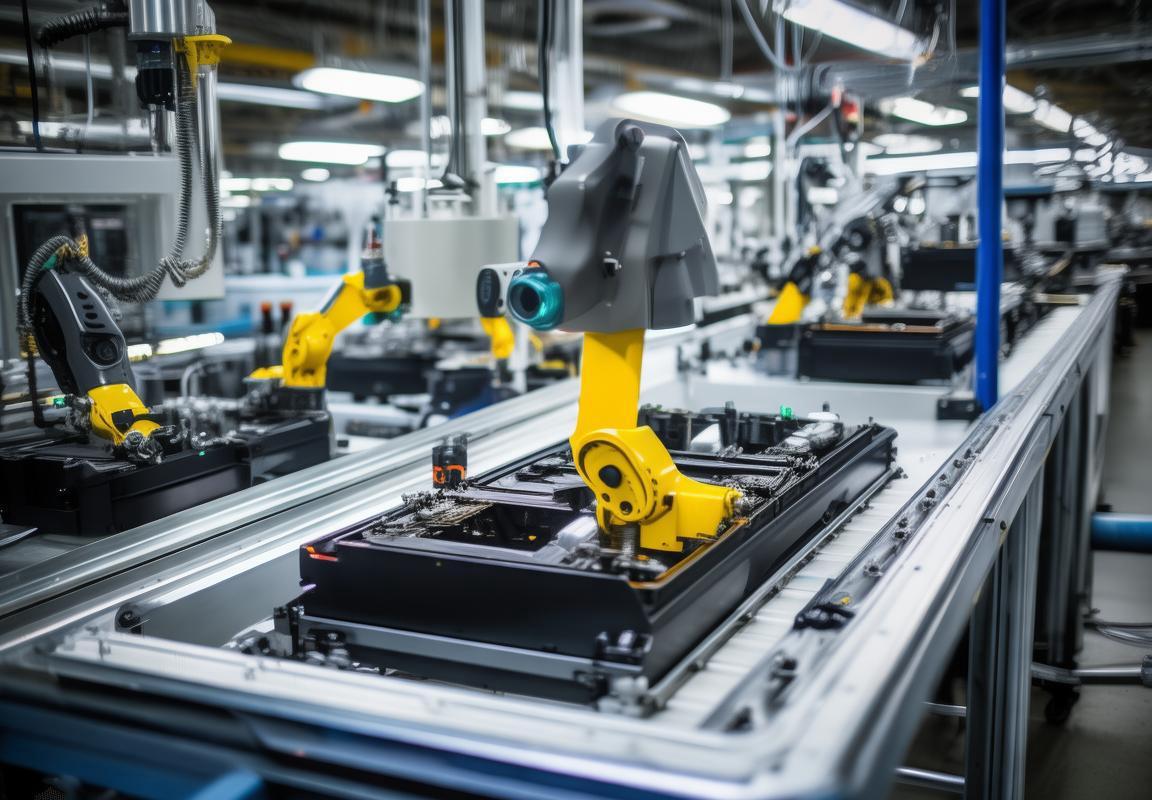
How It Works – Step-by-Step
In the heart of the automated air fryer assembly line, the journey from raw components to a fully functioning appliance is a symphony of precision and efficiency. Let’s take a peek behind the scenes to see how it all unfolds, step-by-step.
The assembly process begins with the meticulous placement of components. Each part, from the outer casing to the heating elements, is carefully positioned onto a conveyor belt, ensuring that every item is ready for the next phase of assembly.
Once the parts are in place, the line moves into the initial assembly phase. Workers, equipped with specialized tools, begin to secure the air fryer’s outer shell. The casing is precision-fitted, and the corners are sealed with adhesive, creating a watertight and airtight container.
As the casing comes together, the electronics stage starts to kick in. The control board, which is the brain of the air fryer, is connected to the heating elements and fan. This step is crucial, as it ensures that the electrical components are aligned correctly and that the connections are robust.
Next, the interior components are inserted. This includes the cooking basket, which is designed to rotate for even cooking, and the heating element, which must be perfectly positioned to ensure consistent temperature distribution. Specialized machinery helps in aligning these parts, reducing the margin for human error.
With the interior in place, the line shifts to the sealing and bonding process. Workers use high-tech sealants to close any gaps and ensure the integrity of the air fryer’s structure. This is a critical step, as a leak or an insecure joint could compromise the appliance’s performance and safety.
Once the structural integrity is verified, the electronic testing phase begins. The air fryer is powered up, and a series of diagnostic tests are run to ensure that all components are functioning correctly. This includes checking the heating elements, the fan, and the control panel for responsiveness and accuracy.
After passing the electrical checks, the appliance moves to the final assembly line. Here, the handle and power cord are attached. The handle is not just a part; it’s the user’s interface with the appliance, so it must be ergonomic and secure. The power cord is also a critical component, and it must be properly connected to prevent any electrical hazards.
Once all external parts are in place, the air fryer is subjected to a series of functional tests. It’s tested for cooking performance, temperature control, and safety features. These tests are rigorous and ensure that the air fryer meets the stringent quality standards set by the manufacturer.
Following the tests, the air fryer is given a visual inspection. Workers check for any cosmetic defects, such as scratches or discoloration, that might have occurred during the assembly process. Any imperfections are addressed immediately to maintain the high-quality standards of the product.
Finally, the air fryer is packaged. Workers place the appliance into its protective casing, ensuring that it is secure for transportation. The packaging is then sealed, and the product is ready to be shipped to the consumer.
Throughout this entire process, the automated assembly line relies on a combination of human expertise and robotic precision. Workers monitor the line, make adjustments when necessary, and oversee the overall quality of the product. The robots, on the other hand, perform repetitive tasks with incredible speed and accuracy, reducing the likelihood of errors.
The end result is a high-quality air fryer that is not only efficient and safe but also ready to be enjoyed by consumers around the world. The automated assembly line is a testament to the power of technology and human ingenuity, working together to create a product that enhances everyday life.
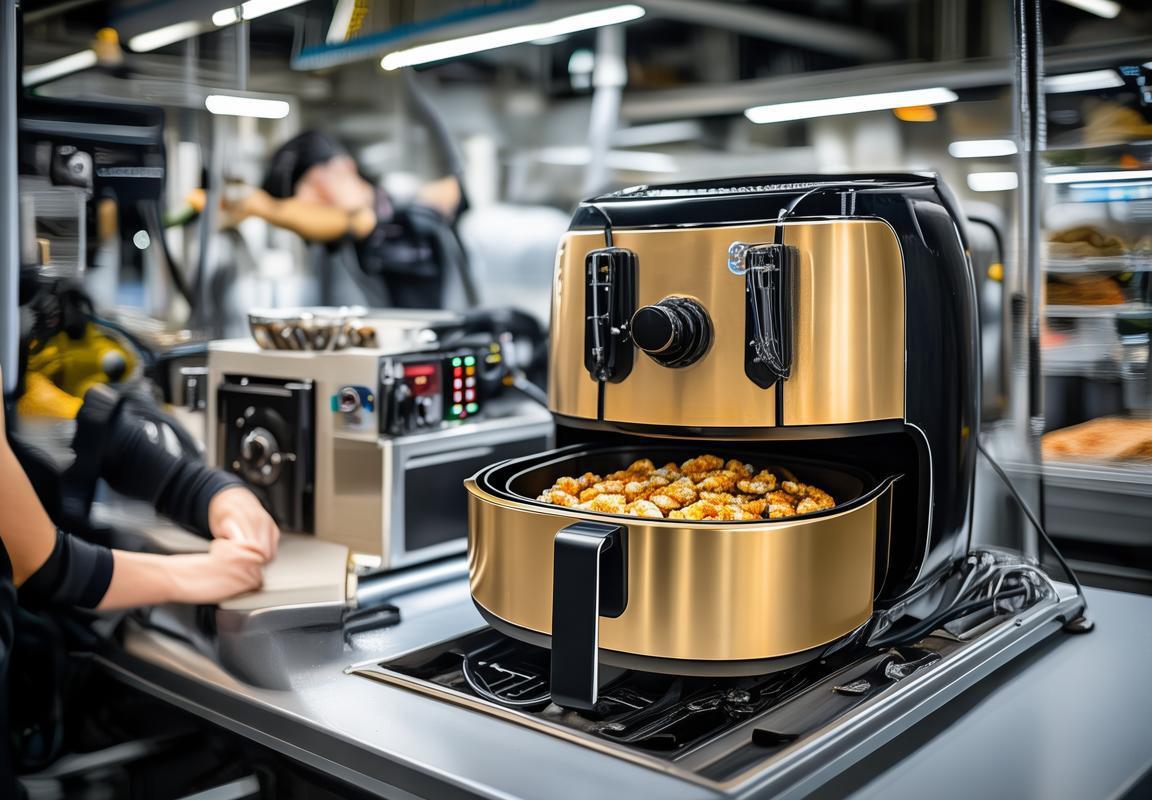
Benefits of an Automated Air Fryer Assembly Line
The automated air fryer assembly line is a marvel of modern engineering, and its benefits are as varied as they are substantial. From efficiency gains to precision improvements, here’s a closer look at the advantages:
Efficiency is paramount in any manufacturing process, and the automated assembly line excels in this regard. It operates with a level of speed and consistency that far outpaces manual labor. The streamlined workflow ensures that each unit moves smoothly from one station to the next without delays or bottlenecks.
Consistency is a hallmark of automated systems. Every air fryer that rolls off the line is subject to the same meticulous process, resulting in units that meet exacting quality standards. This uniformity is impossible to achieve with manual assembly, where human error can introduce variability into each product.
Precision is the backbone of the automated assembly line. Machines are designed to execute tasks with pinpoint accuracy, reducing the margin for error. This precision not only ensures that every air fryer functions as intended but also means fewer defects, which translates to lower costs associated with returns and repairs.
Labor costs are a significant expense for manufacturers, and the automated assembly line can significantly reduce these. By automating tasks that were once performed by human workers, companies can cut down on the number of employees needed, leading to substantial savings over time.
Safety is another critical benefit. Manual assembly lines can be dangerous, with workers at risk of injuries from moving parts, heavy objects, or repetitive tasks. By automating these processes, the risk of workplace accidents is greatly minimized, creating a safer environment for employees.
The automated assembly line can be easily reprogrammed or reconfigured to accommodate changes in product design or production volume. This flexibility allows manufacturers to adapt quickly to market demands without the need for extensive downtime or additional capital investment.
The reliability of an automated system is unparalleled. These lines are designed to operate continuously for extended periods with minimal maintenance. This reliability means less downtime and a consistent flow of products, which is crucial for meeting consumer demand.
Energy efficiency is a growing concern for manufacturers. Automated assembly lines are designed to be energy-efficient, using less power than their manual counterparts. This not only reduces operational costs but also aligns with environmental sustainability goals.
Waste reduction is a direct consequence of the efficiency and precision of automated systems. With fewer defects and less scrap material, manufacturers can minimize waste, leading to cost savings and a more sustainable production process.
Quality control is enhanced with automation. Advanced sensors and inspection systems can monitor the assembly process in real-time, detecting any issues before they become defects. This proactive approach to quality ensures that only the highest-quality products leave the line.
Innovation is fostered by automation. With the ability to quickly iterate and test new designs, manufacturers can push the boundaries of what’s possible in air fryer technology. This innovation can lead to better products, improved customer satisfaction, and a competitive edge in the market.
The automated assembly line also contributes to a more skilled workforce. As manual tasks are replaced by automated systems, employees can be trained to manage and maintain the machines, developing new skills that are valuable in today’s job market.
Lastly, the scalability of the automated assembly line is a significant benefit. Whether you’re producing a small batch or scaling up to meet a high demand, the system can adapt, ensuring that production capacity aligns with market needs without overstretching resources.
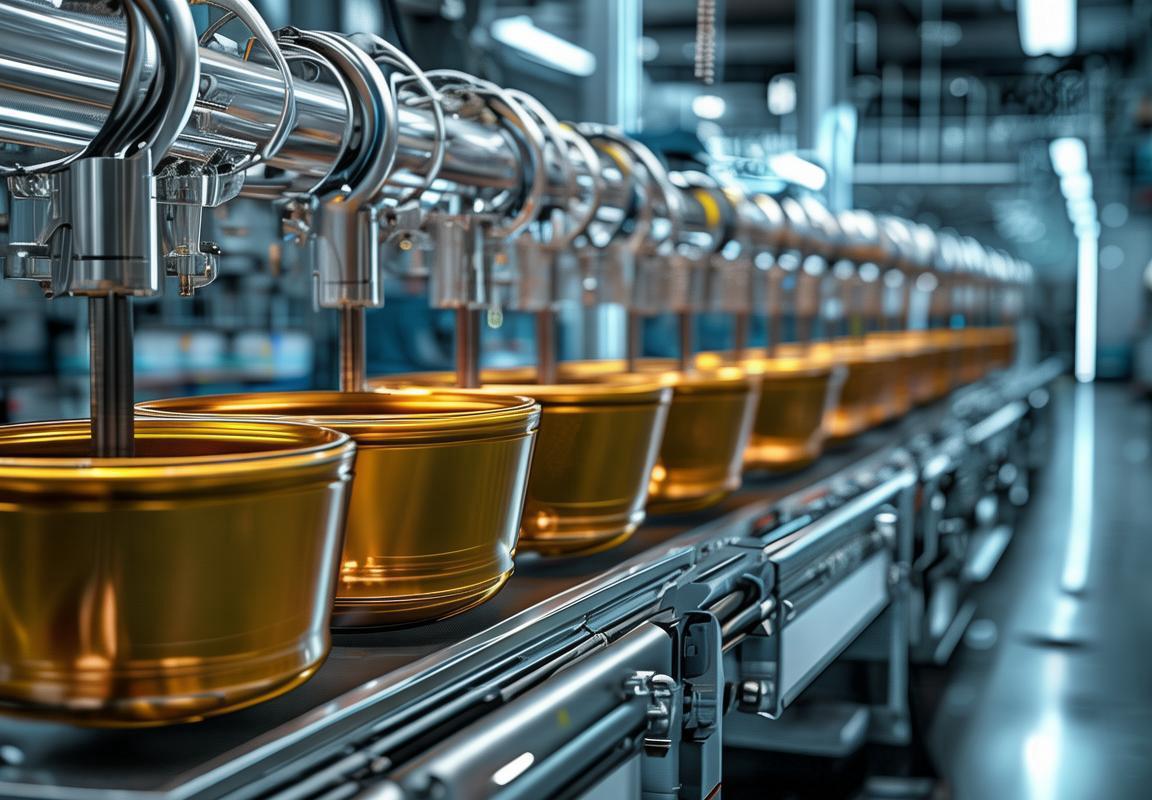
Innovation in Assembly Technology
In the ever-evolving world of manufacturing, the assembly line has been a cornerstone of efficiency and productivity. Over the years, innovation has pushed the boundaries of what’s possible, transforming how we produce goods, including kitchen appliances like air fryers. Here’s a glimpse into some of the groundbreaking innovations shaping assembly technology:
Precision RoboticsThe integration of robotics into the assembly line has been a game-changer. Robots are now capable of performing intricate tasks with precision that surpasses human capabilities. In the case of air fryer assembly, these robots can handle delicate components, such as electronic circuitry, ensuring that every unit meets the highest standards.
Adaptive AutomationTraditional assembly lines operate on a “one-size-fits-all” approach, but modern technology allows for adaptive automation. This means that the assembly line can be reprogrammed to accommodate changes in product design or specifications without significant downtime. For instance, if a new model of air fryer is introduced with a different shape or feature, the line can quickly adjust to produce the new design.
Vision Systems and AIAdvanced vision systems equipped with artificial intelligence are revolutionizing quality control. These systems can inspect components and assembled products for defects at a rate and accuracy that would be impossible for human eyes. AI algorithms can also predict potential failures, allowing for preemptive maintenance and reducing downtime.
Modular DesignModular design has made assembly lines more flexible and scalable. By breaking down the production process into smaller, interchangeable modules, manufacturers can easily add or remove components to adapt to changing market demands. This approach also simplifies maintenance and repair, as individual modules can be replaced without disrupting the entire line.
Internet of Things (IoT) IntegrationThe Internet of Things has brought a new level of connectivity to assembly lines. Sensors and smart devices can collect real-time data on the performance of machines, the condition of components, and the efficiency of the production process. This data-driven approach allows for predictive maintenance, optimizing production schedules, and reducing waste.
Energy EfficiencyInnovation in assembly technology isn’t just about speed and accuracy; it’s also about sustainability. New energy-efficient machines and processes are being developed to reduce the carbon footprint of manufacturing. For example, air fryer assembly lines are being designed with energy-saving features to minimize their environmental impact.
Collaborative Robots (Cobots)Collaborative robots, or cobots, are designed to work alongside human workers, not replace them. These robots can assist with repetitive or physically demanding tasks, freeing up human workers to focus on more complex and creative aspects of the job. Cobots are particularly useful in the assembly of air fryers, where they can handle parts that require delicate handling or precise placement.
Smart MaterialsSmart materials, which can respond to environmental changes or external stimuli, are being explored for use in assembly lines. These materials could be integrated into the air fryers themselves, allowing for features like self-healing surfaces or temperature-sensing components. In the assembly process, smart materials could be used to monitor their own integrity or to signal when they need to be replaced.
Customization on DemandWith advancements in assembly technology, the ability to customize products on demand is becoming more feasible. The same assembly line that produces standard air fryers could be retooled to create personalized models with specific features or finishes, catering to the individual needs and preferences of consumers.
The innovations in assembly technology are not just about making things faster or cheaper; they are about creating a more dynamic, responsive, and sustainable manufacturing environment. As technology continues to advance, the future of assembly lines is likely to be characterized by even greater collaboration between humans and machines, resulting in products that are not only high-quality and efficient but also tailored to the unique demands of each consumer.
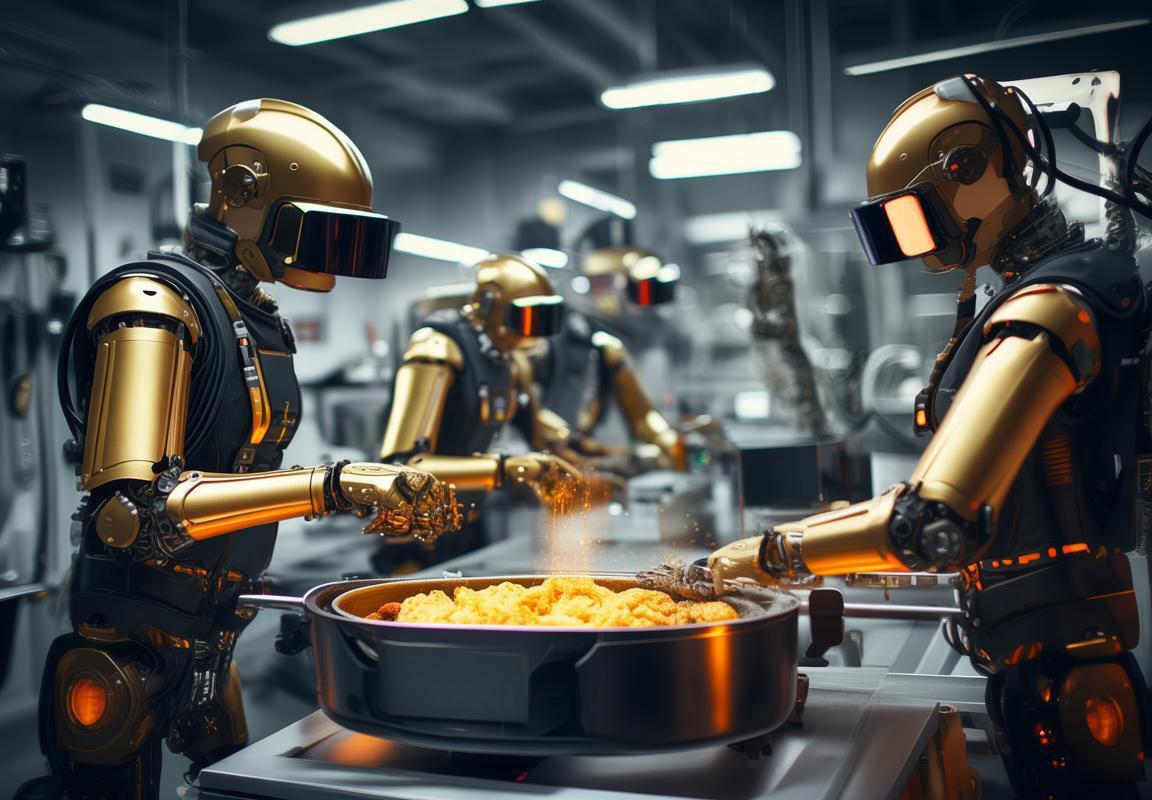
Real-World Applications
In the bustling factory, machines hum to life, each one a testament to the precision and efficiency of modern assembly technology. Imagine the journey of a simple air fryer, from its inception as a design on a drawing board to its transformation into a sleek, ready-to-cook appliance. Here’s a glimpse into the real-world applications of this innovative process.
The assembly line begins with the raw materials, which are meticulously sorted and prepared. Aluminum sheets, plastic components, and electronic circuits are just a few of the elements that make up the air fryer. These materials are transported to the assembly line using conveyor belts, which ensure a smooth and continuous flow of parts.
Once at the line, the aluminum sheets are cut and shaped into the fryer’s body. A robotic arm deftly maneuvers to form the casing, while a laser precision cuts out the necessary holes and features. This level of accuracy is impossible to achieve by hand, ensuring that every air fryer is uniform and fits perfectly.
Moving along the line, the plastic components are joined to the metal body. Adhesive dispensers apply precise amounts of glue, and robotic screwdrivers secure the parts in place. Sensors monitor the pressure and temperature during this process, guaranteeing a strong bond without the risk of overheating or damage.
Electronics come next. A worker carefully places the circuit boards and components into the fryer’s body, guided by a series of automated tools that align and connect each piece with precision. The circuitry is then tested to ensure it functions correctly, a process that would be time-consuming and prone to error if done manually.
As the air fryer nears completion, it undergoes a series of quality checks. Robots equipped with high-definition cameras scan the fryer for any defects, from dents in the metal to misaligned parts. If a problem is detected, the machine is automatically pulled off the line for a human operator to inspect and fix.
Once deemed perfect, the air fryer is painted, polished, and packaged. Automated systems apply the paint in layers, ensuring a durable finish that withstands the rigors of everyday use. Packaging machines then wrap the fryer in protective materials, sealing it securely for transport.
In the real world, this assembly line isn’t confined to a single factory. It’s a global network that spans continents. The materials are sourced from suppliers around the world, and the final product is distributed to markets far and wide. The air fryer’s journey from raw materials to finished product is a perfect example of the interconnectedness of modern manufacturing.
In the retail sector, customers can see the fruits of this automation firsthand. Stores stock shelves with a variety of air fryers, each one having undergone the same meticulous process. Consumers benefit from the consistency and reliability of these appliances, which are designed to last.
In the service industry, the impact of automated assembly lines is just as profound. Hotels, restaurants, and catering services rely on these appliances to prepare meals efficiently. The uniformity and speed of the assembly process mean that these establishments can serve high-quality food at a rapid pace.
Moreover, the efficiency of automated assembly lines has ripple effects throughout the supply chain. By reducing waste and minimizing human error, these lines lower production costs. This cost savings is often passed on to consumers, making high-quality appliances more accessible.
The environmental benefits of this technology are also noteworthy. Automated assembly lines consume less energy and reduce the need for raw materials. The precision of these systems means less waste is produced, and the recycling process for materials is more efficient.
In the educational realm, automated assembly lines serve as a teaching tool. Students learn about robotics, automation, and the intricacies of modern manufacturing. The hands-on experience they gain can inspire the next generation of engineers and innovators.
Finally, the real-world applications of automated assembly lines extend to the repair and maintenance sector. When an air fryer needs fixing, technicians can diagnose and replace components with ease, thanks to the standardized design and production process.
The story of the air fryer assembly line is just one example of how innovation in manufacturing is reshaping the world. From the factory floor to the kitchen counter, the impact of these technologies is clear: they’re making life better, one appliance at a time.
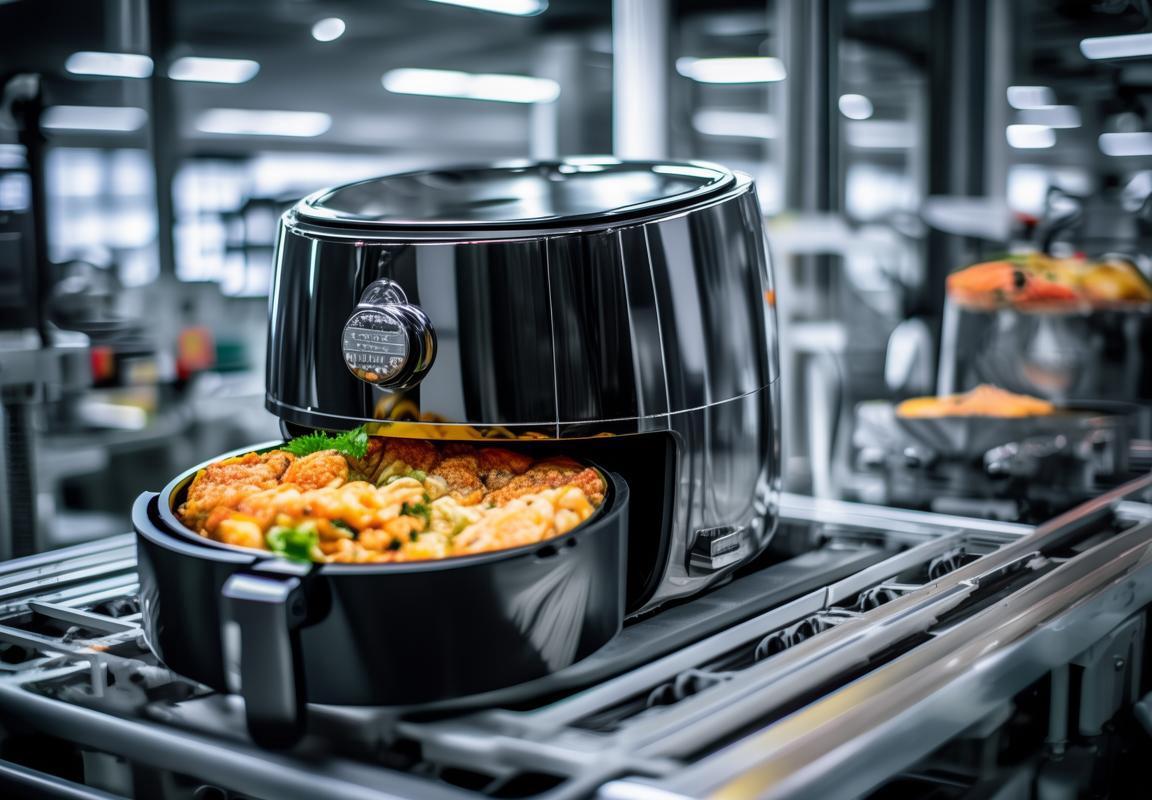
The Environmental Impact
The environmental impact of any manufacturing process, including the assembly line for automated air fryers, is a multifaceted issue that encompasses various aspects. From energy consumption to waste management, here’s a closer look at the environmental considerations:
Automated assembly lines, like those used in air fryer manufacturing, are designed with efficiency in mind. These lines are equipped with advanced technologies that minimize energy use, reducing the carbon footprint of the production process. Smart sensors and programmable logic controllers (PLCs) ensure that machines operate at optimal levels, consuming less power and reducing unnecessary energy waste.
The use of robotics and automation in the assembly line can significantly cut down on material waste. By precisely controlling the placement of components and reducing the risk of human error, manufacturers can minimize scrap and rework. This precision also means that materials are used more efficiently, leading to a decrease in the amount of waste sent to landfills.
In the context of air fryer assembly, the reduction in packaging materials is a notable environmental win. With automated systems, there’s often a streamlined approach to packaging, which can result in less packaging waste. This not only benefits the environment but also reduces costs for the manufacturer.
Automated assembly lines can be powered by renewable energy sources, further enhancing their environmental impact. Solar panels, wind turbines, or geothermal systems can be integrated into the manufacturing facility to supply a portion or even all of the energy needed for the production process. This move towards sustainability is not only a responsible choice but also a smart business decision, as it can lead to lower energy costs in the long run.
The logistics of transportation are also a critical factor in the environmental impact of assembly lines. By optimizing the supply chain and using more fuel-efficient transportation methods, manufacturers can reduce emissions associated with shipping components and finished products. Automated systems can also improve inventory management, leading to more efficient production scheduling and fewer instances of overproduction, which in turn reduces the need for transportation of excess goods.
In the realm of recycling and waste management, automated assembly lines play a pivotal role. The use of automated sorting and recycling systems ensures that materials can be recycled more effectively. For instance, plastic components from air fryers can be separated, cleaned, and processed for recycling, minimizing the demand for new raw materials.
The production of air fryers also involves the use of chemicals and coatings, which must be handled responsibly to avoid environmental contamination. Modern assembly lines incorporate advanced systems for the handling and disposal of hazardous materials, ensuring that they are managed in an environmentally friendly manner.
Moreover, the longevity and durability of products assembled on these lines contribute to a reduced environmental impact. Air fryers that last longer mean fewer units ending up in landfills, and the potential for repairs and upcycling increases.
The use of IoT (Internet of Things) and predictive maintenance in automated assembly lines helps in early detection of potential issues. This proactive approach can prevent equipment breakdowns that might lead to downtime, unnecessary repairs, and additional waste.
In conclusion, the environmental impact of an automated air fryer assembly line is a testament to the advancements in manufacturing technology. By focusing on energy efficiency, waste reduction, sustainable energy sources, and responsible material handling, these lines are not just improving production processes; they are also taking significant steps towards a greener future.
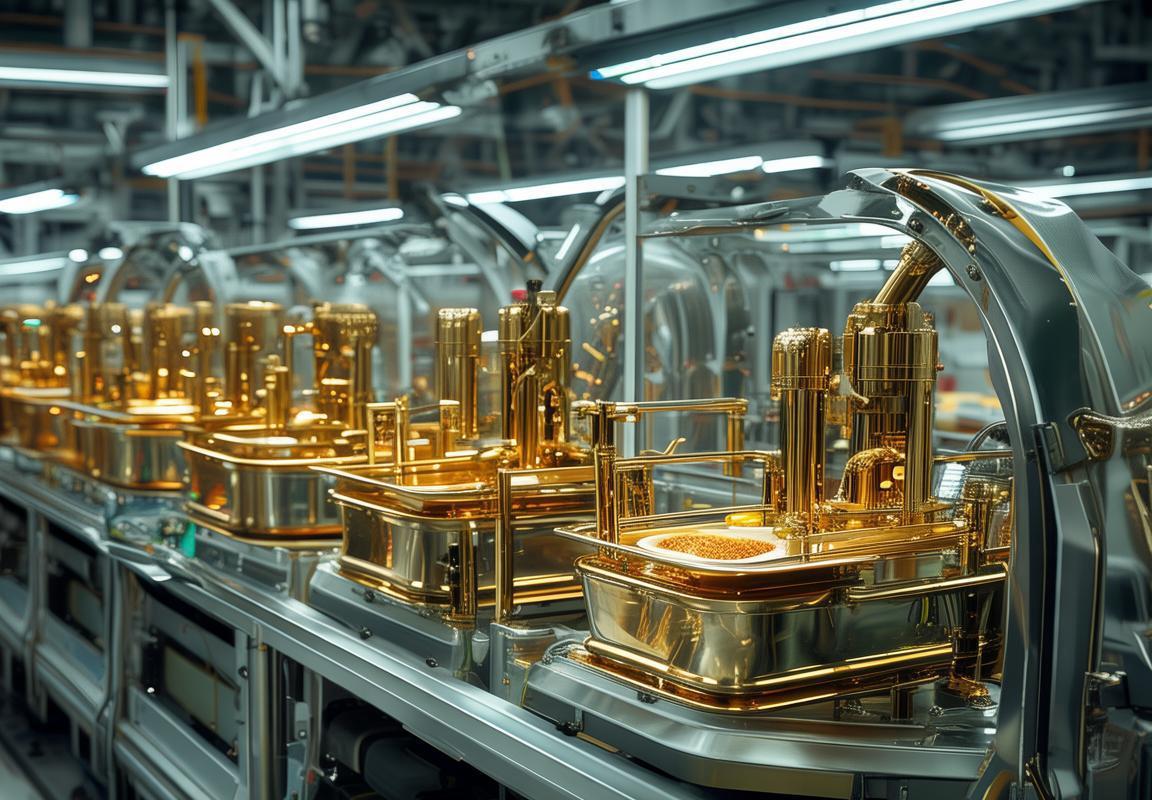
The Human Touch
In the intricate dance of automation and technology, the human touch remains an indispensable element. It’s not just about the hands that build; it’s about the eyes that inspect, the minds that innovate, and the hearts that drive progress. Here’s a closer look at how the human element adds depth and dimension to the assembly process.
The eyes of a quality inspector scan every product meticulously, ensuring that each air fryer meets stringent standards. It’s a task that requires a keen eye and a commitment to excellence, as even the smallest imperfection can affect the performance and safety of the final product. Their attention to detail is not just about catching errors; it’s about upholding the brand’s reputation.
Innovation doesn’t always come from machines. It’s the brainstorming sessions in the design room where engineers and product developers collaborate to create the next big thing. They bring their unique perspectives and experiences to the table, blending creativity with technical knowledge to push the boundaries of what’s possible. This human-driven innovation is what keeps the industry fresh and dynamic.
While robots and automated systems can handle repetitive tasks with precision, the human factor is crucial in managing the unpredictable. When a machine encounters an issue or a rare defect, it’s often up to a human operator to diagnose and resolve the problem. This adaptability is a skill that cannot be replicated by even the most advanced AI.
The human touch is also evident in the training and supervision of these automated systems. Operators learn to understand the intricacies of the assembly line, from the programming of robots to the handling of delicate components. They become the custodians of the line, ensuring that it runs smoothly and efficiently.
Beyond the assembly line, customer service plays a pivotal role in maintaining the human touch. It’s the voice on the other end of the line, the smiling face behind the counter, and the thoughtful response to inquiries that makes a brand relatable. Customers appreciate the personal connection, and it’s the human element that can turn a satisfied customer into a loyal advocate.
In the world of technology, there’s a risk of becoming disconnected from the end user. However, the human touch keeps the focus on the consumer. It’s the product managers and designers who sit down with users to understand their needs and desires, ensuring that the technology serves a purpose and enhances lives.
The human element is also vital in maintaining a sense of community and culture within a company. It’s the team-building exercises, the social events, and the shared experiences that create a cohesive workforce. When employees feel valued and part of something larger, they are more likely to be engaged and productive.
As automation continues to evolve, the human touch must adapt. It’s about finding new ways to integrate technology with the unique skills and qualities that humans bring to the table. This could mean developing new roles, such as data analysts who interpret the vast amounts of information collected by smart systems, or cyber-security experts who protect the integrity of the technology.
In summary, the human touch in assembly lines and beyond is about maintaining a connection to the people who use the products, the people who build them, and the people who manage them. It’s about recognizing that while machines can do many things efficiently, it’s the human element that adds emotion, creativity, and ultimately, the soul to the process.
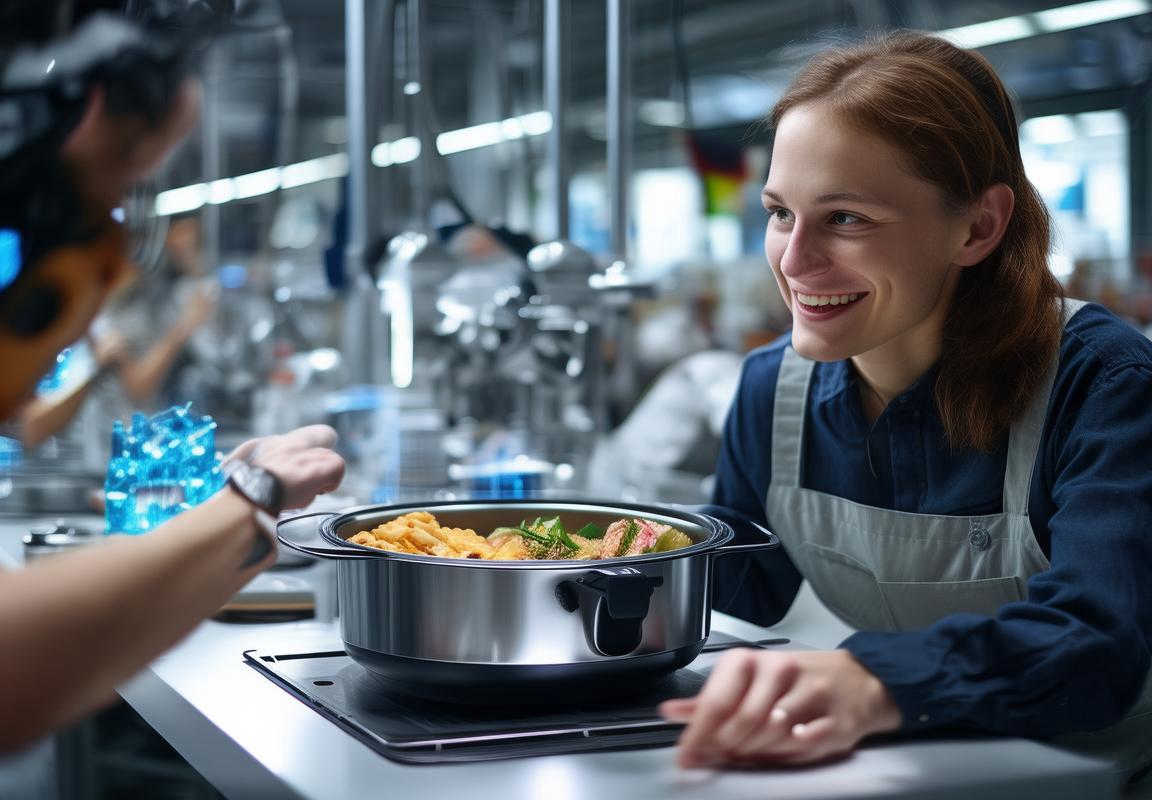
Conclusion
In reflecting on the journey we’ve taken through the intricate world of automated assembly lines, one can’t help but appreciate the profound impact these systems have on our daily lives. The seamless integration of technology and human ingenuity has paved the way for a future where efficiency and precision are the cornerstones of production. As we stand at the intersection of innovation and practical application, it’s clear that the story of the automated air fryer assembly line is not just a tale of progress; it’s a testament to the evolving relationship between humans and machines.
The evolution of the assembly line, from its early days of manual labor to today’s high-tech marvels, has been a remarkable journey. What started as a simple idea to streamline production has blossomed into a complex web of robotics, AI, and human oversight. This transformation has led to a more efficient and sustainable approach to manufacturing, where the balance between technology and human skill is both celebrated and essential.
The human touch in this assembly line isn’t just about the workers; it’s about the collective intelligence that drives these systems. From the engineers who design and program the machines to the maintenance teams that keep them running smoothly, each person plays a crucial role. This interplay between human creativity and machine precision has allowed for the development of products that not only meet but exceed consumer expectations.
In the realm of environmental impact, the automated assembly line has made significant strides. By reducing waste, conserving energy, and optimizing production processes, these lines are not just contributing to the bottom line but also to the health of our planet. The reduction in emissions and the efficient use of resources highlight the forward-thinking approach that is shaping the future of manufacturing.
The real-world applications of automated assembly lines are as varied as they are impressive. From the automotive industry to healthcare, these systems are revolutionizing the way products are made. Their ability to handle complex tasks with unparalleled speed and accuracy has opened doors to new possibilities, from personalized medicine to customized consumer goods.
The integration of advanced technologies such as 3D printing and IoT has further expanded the capabilities of assembly lines. These innovations have allowed for on-demand production, reducing the need for large inventories and enabling manufacturers to respond quickly to market demands. This agility is a game-changer, especially in industries where rapid innovation is key to staying competitive.
As we delve into the environmental impact, it’s fascinating to see how these assembly lines are not just products of technological advancement but also agents of change. By minimizing waste and using renewable energy sources, these lines are setting new standards for sustainability. The reduction in carbon footprints and the promotion of green practices are vital steps towards a more sustainable future.
The human touch in this context isn’t just about the workers; it’s about the oversight and management that ensures these lines operate at peak efficiency. The training and skill development of the workforce are crucial, as they are the ones who monitor and maintain these intricate systems. Their ability to troubleshoot and innovate on the fly is what keeps the assembly line running smoothly.
In conclusion, the automated air fryer assembly line is more than just a piece of machinery; it’s a symbol of the incredible progress we’ve made in combining human ingenuity with technological prowess. It’s a testament to the fact that when we work together, we can achieve remarkable things. The future of manufacturing is bright, and it’s being shaped by the synergy between humans and machines. As we continue to push the boundaries of what’s possible, we can look forward to a world where innovation and sustainability go hand in hand.